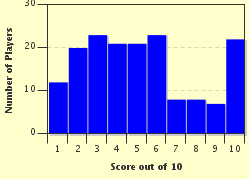Quiz Answer Key and Fun Facts
1. During the 1913 strike and lockout, James Larkin was a leader of the trade union known as ITGWU. What do the letters ITGWU stand for?
2. What was the name of the organisation formed by William Martin Murphy and other employers in order to resist the ITGWU?
3. The strike began on Tuesday 26 August 1913. What important event was held in Dublin that day?
4. In whose house did James Larkin hide, fearing to be arrested before the meeting on Sackville Street on 31 August 1913?
5. Shortly after the meeting in Sackville Street two tenement houses collapsed in Church Street. This drew the attention of the public to the poor living conditions of the workers. When exactly did it happen?
6. The British Trade Union Congress (TUC) was very concerned about the Dublin strike and lockout. On 28 September 1913 the TUC sent a ship which delivered the food to hungry Dublin strikers. What was the name of that ship?
7. What was the name of the organisation that was established in November 1913 in order to protect workers against police brutality? It was also later involved in the 1916 Rising.
8. "Murphy is a desperate character, Larkin is as bad. It would be a blessing for Ireland if they exterminated each other". Which Home Rule leader wrote this?
9. On 9 December 1913 the British Trade Union Congress refused Larkin's proposal for the sympathetic strike in Britain. What was the main reason for this?
10. What famous Irish poet condemned the employers and their actions in one of his poems stating that they counted every penny and comparing them to the well-known Irish Fenian leader John O'Leary?
Source: Author
juliaakamumu
This quiz was reviewed by FunTrivia editor
bloomsby before going online.
Any errors found in FunTrivia content are routinely corrected through our feedback system.

